Deciding on a storage location
What do you need to consider when deciding on the storage location of toxic and flammable substances in drums and cylinders?
Before deciding where and how and where to store these materials, there are several things that you should consider, including:
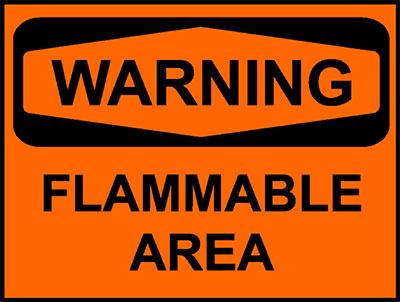 - The particular hazards of the material(s);
- The particular hazards of the material(s);
- The size of the inventory (amount) that needs to be stored;
- The distance from other stored materials;
- Process plant;
- Traffic Routes.
The Health & Safety Executive (HSE) provide several Codes of Practice that can you give you guidance on separation distances such as:
- HS(G)51 Storage of flammable liquids in containersand;
- HS(G)40 Safe handling of chlorine from drums and cylinders
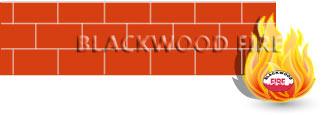 Firewalls can also be made use of where separation distances are inadequate. These should help to reduce the impact of any incidents that might occur. The HSE also provide guidance in their Technical Measures Document, Active / Passive Fire Protection, that covers active and passive fire protection systems and refers to relevant codes of practice and standards.
Firewalls can also be made use of where separation distances are inadequate. These should help to reduce the impact of any incidents that might occur. The HSE also provide guidance in their Technical Measures Document, Active / Passive Fire Protection, that covers active and passive fire protection systems and refers to relevant codes of practice and standards.
The operator should be able to demonstrate that:
- the storage location, and its design, has taken into account any site-specific security requirements
- the potential for vandalism
Ventilation in the Storage Location
The preferred location for the storage of drummed flammable liquids and compressed / liquefied gases is in the open air, to allow vapours to be dispersed effectively.
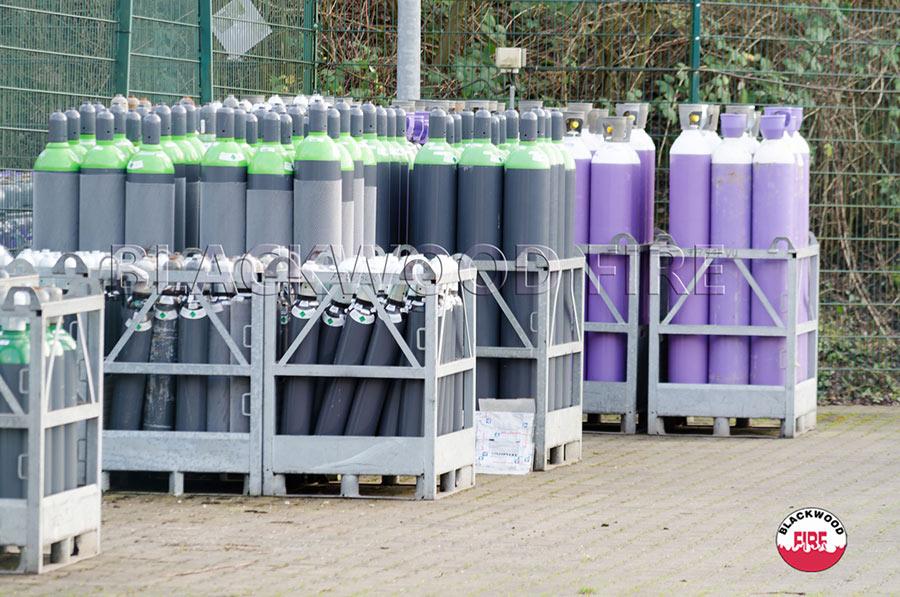
When located in buildings, the operator should demonstrate that there is an adequate level of ventilation achieved by either;
- the presence of a sufficient size and number of permanent openings such as louvres, or
- mechanical ventilation.
If stored indoors, flammable gases such as LPG, may only be stored in;
- purpose built compartments, or
- buildings constructed with fire resistant walls and explosion relief.
Deciding on a storage location
Toxic, flammable or self-reactive materials should not, in general, be stored in the same location (see HSE Technical Measures Document Segregation of Hazardous Materials).
flammable or self-reactive materials should not, in general, be stored in the same location (see HSE Technical Measures Document Segregation of Hazardous Materials).
The operator's risk assessment should demonstrate the compatibility of the substances stored and the suitability of the arrangements. The HSE provides guidance on storage arrangements for warehouses and storage compounds. We strongly recommend you read and familiarise yourself with their guidance in the link that we have provided for you: HS(G)71 Chemical warehousing: the storage of packaged dangerous substances.
Layout of the Storage Location
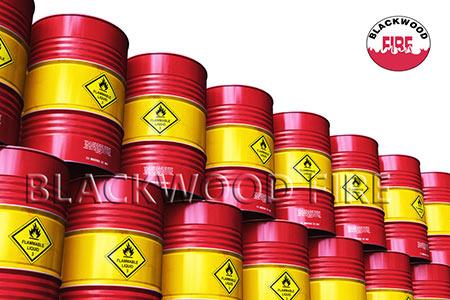 Drums and cylinders should be stored in a safe manner. When considering the layout of the storage location, account should be taken of:
Drums and cylinders should be stored in a safe manner. When considering the layout of the storage location, account should be taken of:
- the height of any stacking;
- the method of stacking
- the hazard of the material stored; and
- the construction of the container.
Racking, or freestanding multi-layer stacks, can be used for drummed materials storing low hazard liquids.
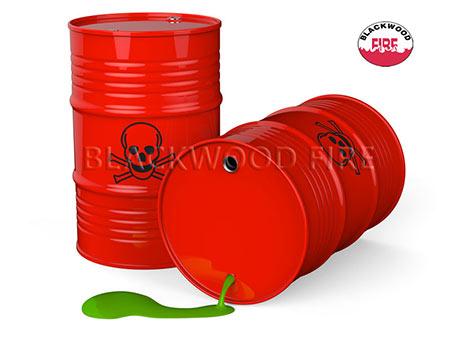 Consideration should be given to:
Consideration should be given to:
- the detection of leaks from containers;
- the method for collection and disposal of such spills to reduce the possibility of cross-contamination and domino effects;
- Training should be provided to operators on dealing with spills and emergency procedures; Adequate access for forklift trucks should be provided;
- Pressurised cylinders and drums should be stored with their valves uppermost in a secure manner;
- The size of any particular stack should be limited, and separation distances should be provided between stacks;
- Drums should not be filled or emptied within the storage area.
On-site transportation of toxic and flammable substances
 Drums and cylinders should be stored in a safe manner. When considering the layout of the storage location, account should be taken of:
Drums and cylinders should be stored in a safe manner. When considering the layout of the storage location, account should be taken of:
- the height of any stacking;
- the method of stacking
- the hazard of the material stored; and
- the construction of the container.
Racking, or freestanding multi-layer stacks, can be used for drummed materials storing low hazard liquids.
 Consideration should be given to:
Consideration should be given to:
- the detection of leaks from containers;
- the method for collection and disposal of such spills to reduce the possibility of cross-contamination and domino effects;
- Training should be provided to operators on dealing with spills and emergency procedures; Adequate access for forklift trucks should be provided;
- Pressurised cylinders and drums should be stored with their valves uppermost in a secure manner;
- The size of any particular stack should be limited, and separation distances should be provided between stacks;
- Drums should not be filled or emptied within the storage area.
On-site transportation of toxic and flammable substances
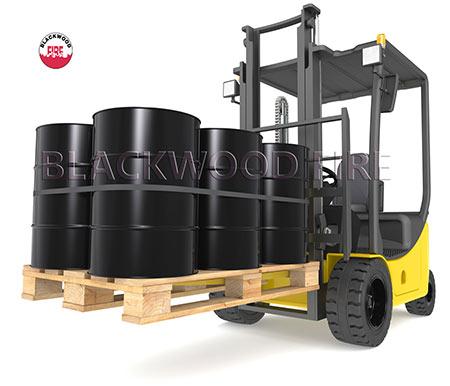 Whilst drums containing flammable liquids can be transported securely on a simple pallet, cylinders and drums containing compressed or liquefied gases require special care and appropriate means of transport should be used at all times, such as:
Whilst drums containing flammable liquids can be transported securely on a simple pallet, cylinders and drums containing compressed or liquefied gases require special care and appropriate means of transport should be used at all times, such as:
- cylinder trolleys, or
- purpose designed attachments for fork lift trucks.
The operator should maintain records demonstrating that personnel involved in the movement of drums and cylinders have received training in:
- the hazards involved in handling them, and
- in the operation of any machinery involved such as cranes and fork lift trucks.
Connection and discharge
Connection and discharge to process of toxic and flammable substances in drums and cylinders
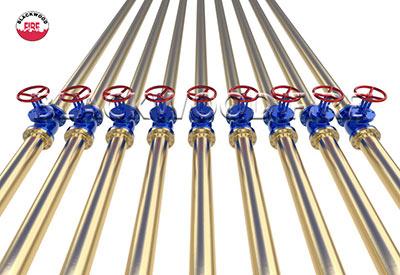 Drums containing flammable substances should be adequately earthed prior to discharge (see the HSE Technical Measures Document on Earthing on the HSE website).
Drums containing flammable substances should be adequately earthed prior to discharge (see the HSE Technical Measures Document on Earthing on the HSE website).- All containers should be secured in position before connection to process plant.
- A procedure should be in place for making the connection and all employees should have received adequate training in the use of the procedure.
- The materials used in making the joint, such as gaskets and lubricants, should be strictly controlled and an appropriate leak test should be carried out when the joint has been made.
- The pipework that the container is connected to should be designed to an appropriate standard.
- Where installations contain fluids at greater than 0.5 bar gauge pressure, they will usually be subject to the Pressure Systems Safety Regulations 2000 (the link takes you to the information on the HSE website) and such systems will usually be required to be subject to periodic examination at regular intervals.
Design and maintenance of containers
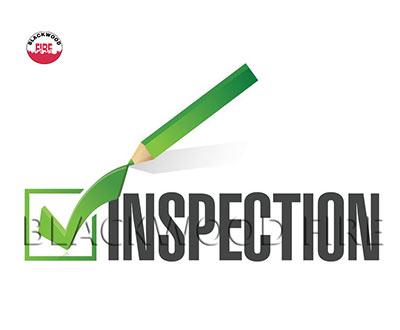 Drums and cylinders should be designed and constructed to an appropriate standard.
Drums and cylinders should be designed and constructed to an appropriate standard.- The operator should be able to demonstrate that an appropriate inspection and maintenance programme is in place in accordance with the relevant Regulations.
The Regulatory framework is complex with the following Regulations currently applying in parallel. We have provided you with links to these Regulations via the legislation.gov.uk website.
- Transportable Pressure Vessels Regulations 2001 (TVPR), and
- schedule 8 of Carriage of Dangerous Goods (Classification, Packaging and Labelling) and Use of Transportable Pressure Receptacles Regulations 1996 (CDGCPL2)
Essentially, CDGCPL2 applies to all types of transportable pressure receptacle, but there is currently a choice between complying with CDGCPL2 or TPVR in respect of cylinders, tubes and cryogenic receptacles (but not pressure drums).
As such, periodic inspection should be done at appropriate intervals as required under CDGCPL2 or, where inspection is in accordance with TVPR, at the intervals specified in RID and ADR (European Directives covering transport of dangerous goods by rail and road).
Containment of spills
Suitable precautions should be in place for the containment of leaked materials.
- Where liquids are handled, suitable spillage containment, such as bunding and drainage sumps should be in place.
- Arrangements should be in place for the routine drainage of rainwater from sumps.
- Where materials that react with water are stored outdoors, the operator's risk assessment should demonstrate the suitability of the arrangements. Follow the link to the HSE website for the Case Study Staveley Chemicals Ltd - Derbyshire (27/6/1982)).
- For the storage of toxic gases, location of the containers in a purpose designed indoor store will reduce the rate at which gas is released to the environment.
Control of ignition sources
 Where flammable liquids or gases are stored, the area should be subject to hazardous area classification for the control of ignition sources. This requirement should be reflected both in:
Where flammable liquids or gases are stored, the area should be subject to hazardous area classification for the control of ignition sources. This requirement should be reflected both in:
- the equipment installed, and
- in the control of operational and maintenance activities in the location.
The movement of drums and cylinders often involves the use of forklift trucks, which can provide a source of ignition for flammable vapours. Any vehicle operating in a zoned area should be protected to an appropriate standard.
Industry applications
Flammable liquids
Containers should be stored in the open air where practical, but if stored inside, five air changes per hour is considered a sufficient ventilation rate.
Flammable liquids
Containers should be stored in the open air where practical, but if stored inside, five air changes per hour is considered a sufficient ventilation rate.
- Standard 205 litre metal drums should be stacked no more than three high and preferably on pallets or racking.
- The maximum stack size should be 300,000 litres with at least 4 metres between stacks.
- Storage should be on an impervious surface such as concrete and be bunded with drainage towards a sump or other suitable handling system.
LPG cylinders
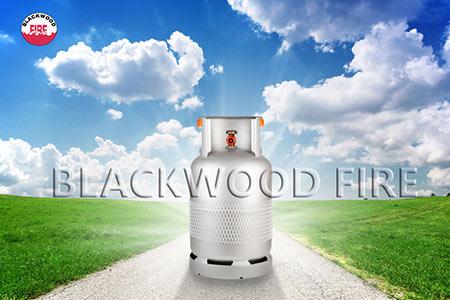 Cylinders should be stored preferably in the open air on a concrete or load-bearing surface.
Cylinders should be stored preferably in the open air on a concrete or load-bearing surface.
- Flammable liquids, combustible, corrosive, oxidising materials, toxic materials or compressed gas cylinders should, in general, be kept separate from LPG containers.
- Containers should be stored with their valves uppermost.
- The maximum size of any stack should not exceed 30,000kg.
- For storage indoors, no more than 5000kg may be stored in each purpose designed building compartment and a maximum of five compartments may exist in a single building.
Chlorine cylinders
 The vast majority of chlorine cylinder and drum stores are located indoors and should be solely used for storing chlorine.
The vast majority of chlorine cylinder and drum stores are located indoors and should be solely used for storing chlorine.- Access doors should fit closely to help contain any leak.
- These stores should be protected from any nearby radiant heat hazards.
- The store should be at least 5 m from any roadway.
- A cylinder store should be at least 20m from the site boundary and a drum store 60m.
- Chlorine gas detectors / alarms should normally be provided.
- Risk assessments should be carried out to consider hazards arising from mishandling (dropping of containers in transport/handling), incorrect operation of valves and failure to connect correctly, maintenance errors and damage by external sources (domino, vehicle impacts, etc.)
Codes of Practice
Codes of Practice relating to drum and cylinder handling
 Any links provided below to Codes of Practice are to information provided on the Health & Safety Executive (HSE) website.
Any links provided below to Codes of Practice are to information provided on the Health & Safety Executive (HSE) website.
- HS(G)51 Storage of flammable liquids in containers, HSE, 1998.
Comprehensive guidance on the design construction, operation and maintenance of facilities used for the storage of flammable liquids in containers is provided. - HS(G)140 Safe use and handling of flammable liquids, HSE, 1996.
This code of practice provides useful information on the connection and discharge of flammable liquid containers to process. - LPGA COP 7 Storage of full and empty LPG cylinders and cartridges, LP Gas Association, 1998.
Guidance on the design and construction of facilities for the storage of LPG in cylinders including fire protection. - HS(G)40 Safe handling of chlorine from drums and cylinders, HSE, 1999.
Comprehensive guidance on the design construction, operation and maintenance of chlorine drum and cylinder storage facilities. Information on the safe connection and discharge of chlorine containers to process is included. - HS(G)71 Chemical warehousing: the storage of packaged dangerous substances, HSE, 1998.
This document gives guidance on compatibility of various substances in shared storage facilities. - HS(G)131 Energetic and spontaneously combustible substances: Identification and safe handling, HSE, 1995.
This guidance note covers self-reactive materials and the circumstances in which these materials can be hazardous. - CS21 Storage and handling of organic peroxides, HSE, 1998.
This document deals specifically with the handling and storage of organic peroxides and the hazards that can arise. It gives guidance on the safety measures required for the safe storage of organic peroxides. - L122: Safety Of Pressure Systems, HSE, 2000.
This document contains the approved code of practice (ACOP) and guidance on the Pressure Systems Safety Regulations 2000
The content on this page contains public sector information licensed under the Open Government Licence v3.0.
Please note that any images forming part of this advice article are for illustrative purposes only and may not be indicative of colours, labelling or markings relating to any country specific legislation, guidelines or standards. Written information and guidance relate to the United Kingdom and specifically to information provided by the Health and Safety Executive (HSE) and other UK public sector bodies.
Information herein is primarily provided for the purposes of managing fire risk. However, in order to give the reader a more complete understanding of the storage and handling of toxic and flammable substances in drums and cylinders, we have provided additional information. If you need specific advice or information on matters not directly related to fire risk management, you should consult an expert with the appropriate knowledge and/or the supplier or manufacturer.
Disclaimer: INFORMATION PROVIDED ON THIS WEBSITE IS NOT INTENDED TO BE TREATED AS PROFESSIONAL ADVICE AND SHOULD NOT UNDER ANY CIRCUMSTANCES BE USED AS A SUBSTITUTE FOR PROFESSIONAL ADVICE. ALWAYS CONSULT A FIRE PROFESSIONAL, OR OTHER RELEVANT PROFESSIONAL, FOR ADVICE ON YOUR PARTICULAR CIRCUMSTANCES AND REQUIREMENTS.

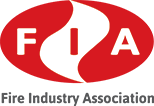
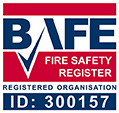
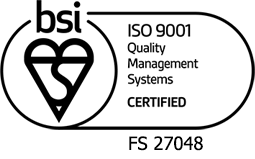
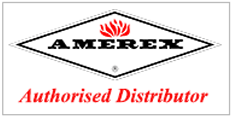
 Blackwood Fire began trading in 1983. We have an absolute belief in quality - it is the cornerstone of our company's culture. Our primary aim is to help you protect the lives and livelihoods of people and your organisation or business by ensuring that we only provide quality products that fully meet industry standards - also, by providing continuous training to our staff via recognised trade bodies, associations and the British Standards Institute (BSI). We strongly believe that promoting quality practices and dealing with everyone in a fair and honest manner adds value to organisations and businesses. Read more on our
Blackwood Fire began trading in 1983. We have an absolute belief in quality - it is the cornerstone of our company's culture. Our primary aim is to help you protect the lives and livelihoods of people and your organisation or business by ensuring that we only provide quality products that fully meet industry standards - also, by providing continuous training to our staff via recognised trade bodies, associations and the British Standards Institute (BSI). We strongly believe that promoting quality practices and dealing with everyone in a fair and honest manner adds value to organisations and businesses. Read more on our 